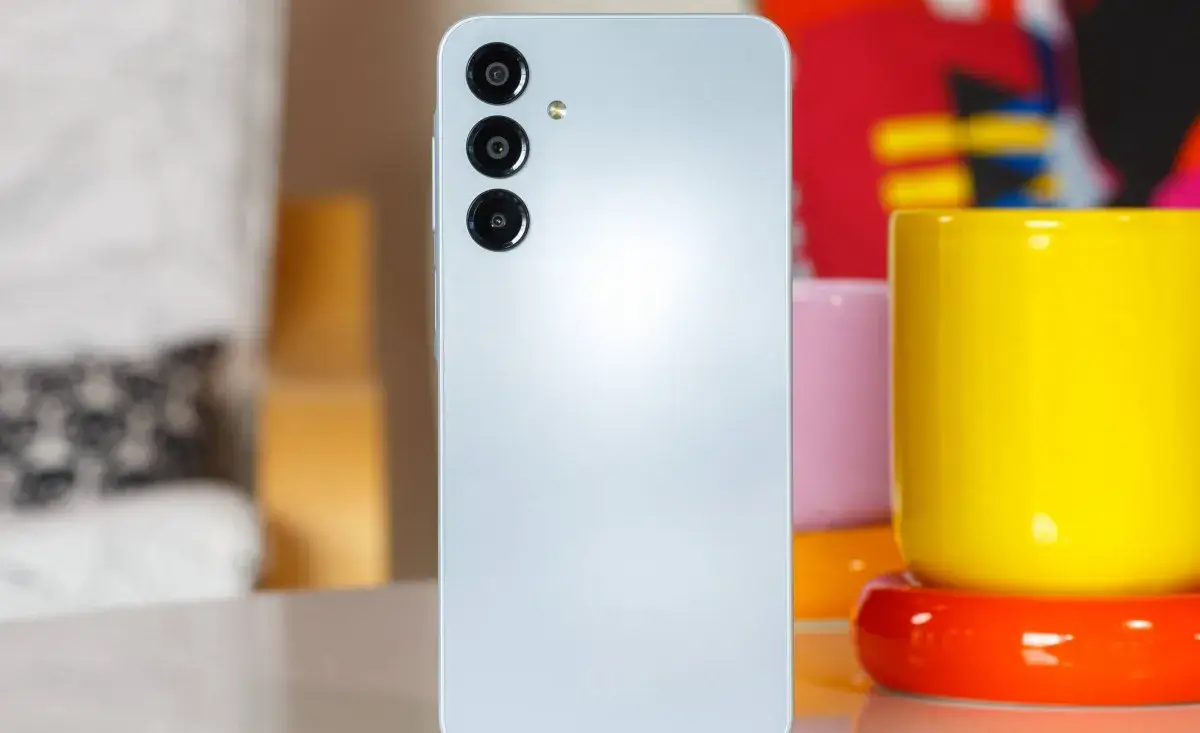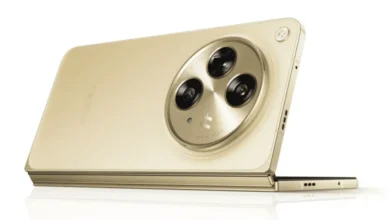Samsung Galaxy A16 4G Review

This series’ biggest improvement was the Galaxy A15, which included additional RAM, a high-resolution 90Hz AMOLED, and 25W quick charging. The larger display, ingress protection, and extended software support of the Galaxy A16 further enhance the product.
Though it has a larger 6.7-inch 1080p 90Hz Super AMOLED screen, the new Galaxy A16 4G feels and looks a lot like the Galaxy A15 4G. Next is the Galaxy A1x phones’ initial ingress protection rating. Although it isn’t very good, its IP54 rating for basic dust and splash resistance is still better than nothing.
Like the Galaxy A15 4G, the new A16 4G is powered by the Helio G99 chip. Additionally, there is the Galaxy A16 5G, which contains a 5G modem and a separate processor.
Other specifications are also the same as those of the Galaxy A15 4G, including a 5,000mAh battery with 25W fast charging, a 13MP front camera, a side-mounted fingerprint scanner, and three rear cameras (50MP primary + 5MP UW + 2MP macro).
Samsung promises up to six major Android upgrades for the Galaxy A16 4G, which comes with One UI 6.1 and Android 14 by default (compared to the A15 4G’s four OS updates).
Opening the Galaxy A16 4G box

The Samsung Galaxy A16 4G comes in an environmentally friendly, thin paper package. A SIM ejector and a white USB-C cable are included in the package. The Galaxy A16 does not come with a power adaptor, however it does support up to 25W rapid charging.
Design and body quality
The Galaxy A16 4G and the Galaxy A15 4G are the same. It’s simply bigger. The new model is more robust because it has a little larger 6.7-inch AMOLED screen. precisely the same size as the A16 5G.
Fortunately, it doesn’t seem heavy, and even better, it features Samsung’s classic design, which we’ve already seen on a number of phones.
There is a flat layer of matte plastic on the back, a flat plastic frame, and a flat glass front on the Galaxy A16 4G. Here, each camera sensor is surrounded by three protruding rings rather than a camera island.

Here, the ingress protection (IP54) is a first for the Galaxy A1x series. Accordingly, the Galaxy A16 4G is resistant to water splashes and dust-protected, though not quite dust-tight. It can withstand the occasional rain, but you can’t submerge the A16 in water.
There are three color options for the Galaxy A16 4G: Blue Black, Light Green, and Light Gray (our color).
The Galaxy A16 is well-built and has decent grip throughout. Light-colored variants look fantastic and resist smudging. All things considered, the Galaxy A16 meets all the requirements for a low-cost phone.

The frame is primarily flat and has a matte appearance. The Power/Lock key with an embedded fingerprint sensor is on the right, and the hybrid dual-SIM tray is on the left.
Camera, photo and video quality
One area in which the Galaxy A16 4G hasn’t been lowered in comparison to its 5G sister is the camera configuration. The image hardware on both devices appears to be rather primitive.
That includes a 50MP primary camera with no additional features, only basic focusing. Additionally, there is a 2MP macro camera on the back and a somewhat low-resolution 5MP ultrawide. A 13MP fixed-focus camera on the front isn’t much better.

The fairly standard Samsung ISOCELL S5KJN1 sensor, also referred to as the JN1, is used by the primary camera. It has 0.64µm individual pixels and has a 1/2.76″ sensor.
A rather esoteric SmartSens SC501 sensor serves as the foundation for the 5MP ultrawide. Each pixel measures 1.12µm, and its optical size is 1/5″. Not unexpectedly, the macro camera is built on top of a rather unremarkable GalaxyCore sensor.
Back camera
The A16 4G’s primary camera defaults to taking binned images at 12.5MP. These appear reasonably good for a low-cost gadget. Natural colors are pleasing. Although it’s to be anticipated, dynamic range leaves some situations wanting.


Ultrawide camera
There is not much to say about the Galaxy A16 4G’s ultrawide camera. It has no fancy features like autofocus and only a 5MP resolution.
The quality of the image is terrible. Their corners are much more aggressively soft, and they are blurry and mushy with little detail. Contrast and dynamic range are both subpar. The colors complement the primary camera and appear good, at least.


Video capture quality
Although the Galaxy A16 4G records videos in AVC/h.264 by default, you can reduce space by switching to HEVC/h.265. Videos feature a 48 kHz stereo audio stream and a video feed at about 17 Mbps (1080p) within an MP4 container. It’s quite standard.
The Galaxy A16 4G’s primary, ultrawide selfie cameras can record videos at up to 1080p. It appears that the chipset of the A16 4G is hard-limited to 1080p, in contrast to the A16 5G, which theoretically enabled us to capture 4K utilizing Open Camera. Since the 4K on the 5G model isn’t actually 4K, it’s not a significant loss, to be honest.
Video stabilization is a regrettable major missing on the Galaxy A15 4G. There is no native 1080p resolution available on the 4G device, however it is possible on the 5G version. As a result, moving videos may appear rather unsteady.
Nonetheless, the Galaxy A16 4G produces respectable videos when it is properly stabilized. It’s nothing special, but for a low-cost gadget, it’s rather precise and detailed.
According to current market pricing, the base 128GB/4GB RAM version of the Galaxy A16 4G appears to cost approximately £169/$185 on Amazon. Even while the price tag is undoubtedly affordable, we still question whether the value offer is sound.
First off, the Galaxy A16 5G is actually about the same price in most markets. It is definitely a superior gadget based just on connectivity and the availability of 5G, but we are not claiming that it is your best option in the price range either. Additionally, it provides video stabilization, which is a serious feature. It is essentially the same phone else.
You can presently get a Galaxy A25 for roughly the same price as the Galaxy A16 5G. Not to mention the entry-level 128GB/4GB RAM variant. The far more future-proof 128GB/6GB RAM option is available. Yes, Samsung is only promised four significant OS updates for the A25, not up to six.
Our conclusion
The Galaxy A16 4G doesn’t have any really poor features, but we also can’t think of anything particularly noteworthy about it. The main improvement to the series was the A15 last year, which featured 25W quick charging and a refresh rate of 90Hz.
Both the IP54 ingress protection and the somewhat larger display that Samsung added this year seem like pretty minor upgrades. The Helio G99 chip, a capable but small piece of equipment, is still used in the A16 4G. The cameras remain the same and are, to be honest, really unimpressive.




I need Samsung Galaxy A 16